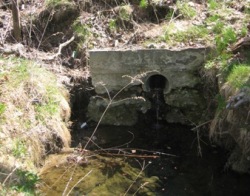Hurricane Irene and heavy rains across the East Coast have caused major flooding. Here are a few tips on what to do if your house meets with some of the floodwaters.
University of Iowa researchers have found high levels of toxic polychlorinated biphenyls (PCBs) in the deep sediments lining the Indiana Harbor and Ship Canal (IHSC) in East Chicago, Ind.

Phase II stormwater permit renewals to require investments in time and resources.
The U.S. Environmental Protection Agency is proposing to approve the 8-hour ozone air quality plans for the San Joaquin Valley and South Coast areas. These plans, known as State Implementation Plans, are the roadmaps to meeting the Clean Air Act standard of 0.08 parts per million of ozone as measured in 8-hour increments.
The Florida Fish and Wildlife Conservation Commission recently partnered with Fishing for Energy to remove derelict stone crab traps from the marine environment near Everglades City, Fla., making it the second location in Florida to join the unique partnership.
Boston University researchers have estimated that even if international efforts to limit temperature increases to 2 degrees Celcius, mean global temperatures will continue to be extreme.
Restoring prairies to their native vegetation can be approached from several directions. Managers might eliminate invasive plants through use of herbicides, encourage growth of native species through seeding, or manipulate conditions to favor native species.
Trees can reveal key information about fire events, and some trees have a lot to tell — one tree researchers examined endured 14 separate fires through its lifetime.
Although the burning of natural gas emits far less carbon dioxide than coal, a new study concludes that a greater reliance on natural gas would fail to significantly slow down climate change. The study appears this week in the Springer journal Climatic Change Letters.
RadioShack collects 5-million pounds of rechargeable batteries.

A pilot waste-to-energy system recently constructed by Duke University and Duke Energy garnered the endorsement of Google Inc., which invests in high-quality carbon offsets from across the nation to fulfill its own carbon neutrality goals.
Mutual Housing has been known for its green focus since 2003 when the nonprofit became the first multifamily development to install solar electricity in the Sacramento Municipal Utility District.
New research suggests that ancient sharks bred in the shallows of freshwater lakes, forming nurseries for their hatchlings.
By looking to Mother Nature for solutions, researchers have identified a promising new binder material for lithium-ion battery electrodes that could not only boost energy storage, but also eliminate the use of toxic compounds now used in manufacturing the components.
The research, conducted by the U.S. Army Engineer Research and Development Center (ERDC), focused primarily on the gathering of root characterization and site conditions through fieldwork, and modeling of single, living trees for both slope stability analyses and seepage analyses.

In the first U.S. study to measure the real impact of building energy codes on total household energy consumption, Climate Policy Initiative (CPI) found that U.S. building energy codes have reduced household energy use and greenhouse gas emissions
The percent of land area experiencing exceptional drought reached record levels in August in three U.S. states – Texas, Oklahoma and Kansas – amid new concerns about how long the conditions may persist, an official with the National Drought Mitigation Center at the University of Nebraska-Lincoln said.
Recent heavy rain and flooding has increased the danger of landslides on moderate to steep slopes, according to scientists in the Bureau of Topographic and Geologic Survey in the Department of Conservation and Natural Resources (DCNR).
Each year, more than 170 million people visit national forests for recreation. And the physical activity associated with these visits burns 290 billion food calories. That equals enough french fries laid end to end to reach the Moon and back -- twice -- according to a recent study in the Journal of Forestry.
A recent study from a duo in Kansas State University's department of apparel, textiles and interior design found that when it comes to consumers' rationale for not purchasing sustainable clothing, perception and reality aren't always cut from the same cloth.